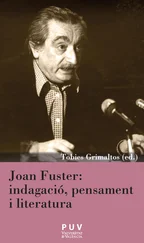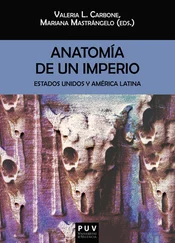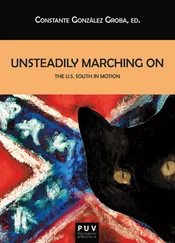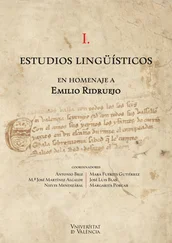The post-emancipation scenery in Jamaica where the passengers find refuge after the shipwreck, as well as in Haiti where the vessel briefly stops after Jamaica, allows the narrative to contextualize the transformation of the young white passengers. Both Jamaica and Haiti attract criticism from the passengers who are in favor of racial segregation and who believe in the inferiority of people of color. These criticisms prepare the ground on which Mr. Lindsey lectures the white passengers on his and his wife’s ideas on true Christianity. For instance, after Meta and Emma Pierson discuss the problems that the emancipation in Jamaica in 1838 introduced, Mr. Lindsey reads them a letter by his wife. In the letter, Mrs. Lindsey argues that racism hinders the genius of the African-descendant which could otherwise contribute to the establishment of a true Christian society. The insights from the letter that the Pierson sisters gather bring them closer to Zoë and Hilda whose intellectual and artistic interests they find quite compatible with their own. Similarly, Young America’s fiery ideas on various subjects such as slavery, race, female emancipation, the future of the US, and expansionism, begin to change in Jamaica. Here, the narrative reveals that beneath his racist, colonialist, and misogynist stance is indeed a lack of “right relations with god, nature, and humanity” (Livermore, Zoë II 214-15). This disclosure, very much like his heroic attempt to save the black waiter, implies that Stephenson is capable of moral development and becoming a follower of the principles that the novel promotes.
Likewise, the narrative introduces Haiti to lecture on anti-colonialism and anti-racism. Some American passengers make condescending remarks about the difficulties that the troubled island faces more than four decades after its heroic revolutionary era, such as the division of the island, economic crises, and socio-economic disorder. The narrative dismisses these comments by comparing the island’s situation to that of France “as an instance of a Caucasian people finding same difficulty in their attempt at a perfect republican state, and [speaks] of the miserable condition of Europe generally in both her internal and external relations” (Livermore, Zoë II 216-17). Portraying the difficulty that Haiti experiences following its revolution as hopefully as that of France, the narrative creates a space of revolution in the Caribbean for its white American characters that is parallel to the recent history of the successful abolitionist movements in the archipelago. Furthermore, and even more significantly, in this wave of transformation the narrative endows the Caribbean, and its revolutionary and abolitionist histories, with a pedagogical value for the US South. The Caribbean, thus, becomes the pioneer of the values the novel repeatedly calls “the signs of the times” (31, 130, 297).
Under the guidance of the northerner Mr. Lindsey and the pedagogical atmosphere that the Caribbean provides, Young America eventually declares a very fervent support for both female and slave emancipation even at the risk of the union between the South and the North. Even though other characters, including the Pierson siblings and Hilda, undergo an intellectual transformation during this voyage that eventually turns them into advocates of abolition and feminism, the narrative puts none of them under such a bright spotlight as Young America. Neither are they represented to be as strongly associated with an ideology like Young American filibusterism. Why does the narrative want to transform Young America, and no one else, so much? Doubtlessly, it is less Young America as an individual character than his expansionist, white-supremacist, and pro-slavery arguments that the novel places in such a focal point in its narrative of transformation. In this sense, Stephenson as Young America stands for what Livermore’s novel regards as southern; and thus, his transformation becomes symbolic of a revolution in the South that the novel promotes. Read in this sense, the geographical context within which this ideological transformation occurs gains another significance in terms of the way that the novel imagines the South and its future.
It is thus necessary to ask why instead of the other southern character in the narrative, namely Reverend Chichester, the novel chooses to put Stephenson in the center of this transformation. Throughout the story, Chichester maintains his racist stance, unlike Stephenson. The novel singles him out as the only passenger who is not in favor of rescuing the black waiter during the shipwreck, and displays him as one who misuses the word of God as a pretense for his white-supremacist opinions. That is, Chichester, more than Stephenson, is a character who is antagonized as the personification of “the South as Other” (O. V. Burton), or the South that even Stephenson eventually would sacrifice to achieve the liberation of slaves and women if the region refuses to follow “the signs of the times.” For the imagery of the South that the novel constructs, the direction from which these signs reach the South is equally important as what these signs are. Just as Young America needs guidance from the northerner and transcendentalist Mr. Lindsey and the example that the Caribbean so vividly exhibits in front of him, the South needs moral instruction from the North and the political guidance of the Caribbean to be part of the morally superior egalitarian and democratic Christian Republic that the novel promotes.
Stephenson’s remark, “[e]very mother’s son of them shall be freed, or I’ll divide the Union” (Livermore, Zoë II 227), hints at an unaccustomed version of northern abolitionism: one that is not strictly unionist as it is typically attributed to the northern ideologies in the grand North-South spatial metanarratives about the antebellum US. Nor does Livermore’s novel meet the antebellum expectations from women’s fiction, as Burton and Burton argue, to act as a mediator between the northern and the southern sections of the country (309). Instead, Zoë implies that it is only as long as the South follows the lead of its Caribbean neighbors on emancipation that it can become part of both the Union and the future Christian Republic. While putting its abolitionist and transcendentalist ideological stance ahead of the union between the North and the South, the novel still suggests that this republic will begin to flourish in the US. The narrative reaches an end following Zoë’s tragic death, with Hilda and Stephenson traveling to the northern US to publish the quadroon’s abolitionist manuscript; as O’Brien observes, “instructing America with lessons brought from the Caribbean” (O’Brien 102).
Livermore’s employment of the mobility through the Caribbean in the novel as a morally transformative journey, thus, makes a novel that barely ever takes place in the US South a utopian narrative that calls for a revolution in this region. While the novel depicts the region both woven into a circum-Caribbean network where established borders lose their significance, the South appears in need of the insights of its Caribbean neighbors to which it remains inferior in the rhetoric of liberty defined in abolitionist and feminist terms. Referred to as “the signs of the times,” the notion of liberty in the novel becomes the prerequisite for this region to be included both in the existing union of the US and in the imagined Christian Republic in the future. This unique vision of the South in Zoë establishes a great contrast against the spatial narrative in the pro-slavery and filibustering novel by Holcombe which will be the focus of study in the following.
***
John W. Lowe writes, “Lucy Holcombe Pickens would have been a remarkable figure in southern and American history even if she had never written a single word,” given her fame as a southern belle in her youth, and later as the first lady of Confederate South Carolina and the only woman to have her portrait on a Confederate banknote. Her social position as a woman in southern history alone justifies the plenitude of biographical works on Holcombe. However, it has been her book The Free Flag of Cuba or The Martyrdom of Lopez, A Tale of the Liberating Expedition of 1851 , 1 which is regarded as “the first filibustering novel about Cuba” (Burton and Burton 298), that has brought the recent scholarly interest in the author more than anything else. Written under the penname H. M. Hardimann – a rather masculine choice of pseudonym – FFC has masculine purposes: vindicating Narciso López’s third and last filibustering expedition to Spanish Cuba and arousing a “spirit of vengeance” in the reader, as Holcombe puts it in the preface to her novel (Hardimann v). 2 Still, to avoid being yet another “dry historical record” (v), Holcombe pens a semi-fictional novel that, besides the heroic depictions of the filibustering expedition, also includes the domestic story of two young women. This domestic hinterland of the expedition will be the center of analysis here.
Читать дальше












